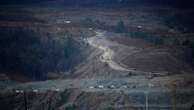As large parts of the world experience another year of record-breaking temperatures and extreme weather events, the effects of a changing climate are no longer a distant threat. The storm is at our doorstep, and there is no safe harbor from its increasingly potent challenges. For business leaders, an urgent shift in mindset—from reactive to proactive—is necessary to contend with the rising risks and build a climate resilient future.
Many business and government leaders react to climate risks only after they materialize, facing costly disruptions from flooding, extreme heat, wildfires, and large storms. These events snarl supply chains, spoil harvests, and damage physical assets like buildings, leading to tremendous remediation costs.
Swiss Re, one of the largest insurers, estimates global economic losses from extreme weather events at $200 billion annually. The U.S. alone loses over $90 billion annually according to the same analysis, and remains one of the most economically susceptible areas of the world to extreme weather hazards. The economic toll, however, is overshadowed by the rising losses in human life tragically linked to climate change.
Notwithstanding mounting evidence that climate change is creating massive costs for people, businesses, and societies, the UN estimates an adaptation finance gap of $194 billion to $366 billion per year. This underscores a troubling lack of urgency among key stakeholders—corporations, financial institutions, and governments—with potentially devastating implications for developing and developed economies.
Furthermore, new research shows that implementing climate resilient measures, such as water efficiency technologies or regenerative agriculture, typically has a benefit-to-cost ratio for companies that ranges from 2:1 to 15:1. Yet too few corporates are systematically integrating adaptation strategies, leaving business operations vulnerable to disruptions that could drive up higher prices on a range of products, including building supplies, groceries, and insurance policies.
Why are climate adaptation strategies lagging? For one, they are costly to implement, especially for small to medium-sized enterprises. Think about retrofitting an office building with heat-resistant insulation or adding storm-resistant barriers to prevent flooding. Changes to physical assets and infrastructure incur significant costs and can be prohibitively expensive for all but the largest companies. These expenses are often on top of climate mitigation-related spending that aims to reduce greenhouse gas emissions.
Businesses also struggle with limited data and analytical capabilities to effectively model climate risk outcomes with precision, muddying cost-benefit analyses and other financial calculations. These challenges are shared in varying proportions across developed and developing economies. Without clear regulations and incentives for the private sector to adhere to, business leaders from Manila to Miami to Addis Ababa are reluctant to press forward with urgency.
In a context defined by more frequent extreme weather events, the business logic for supporting adaptation is becoming increasingly clear. The more climate resilient the organization, the better equipped it is to endure shocks to business operations and value chains.
A study of 100 major businesses conducted by the World Economic Forum’s Centre for Nature and Climate found that the financial impacts from physical climate risks equal roughly 10% of annual sales and 4% of market value. Effective adaptation strategy implementation would substantially soften that blow over time.
As climate-related risks escalate, so does the need for new products and services, offering business opportunities to innovate and drive operational efficiencies. The same analysis points to enhanced revenues from increases in production capacity as well as reduced costs among companies that pursued adaptation opportunities.
From a governance perspective, leading companies should ensure climate risk considerations that encompass both mitigation and adaptation objectives are a core part of board-level strategic discussions. Given the collective action challenge of climate change, it is important that business leaders also seize the opportunity to proactively engage local and national governments to shape policies and incentives that unlock capital and investment toward adaptation.
Strategic adaptation can stem future losses, generate revenue opportunities, and reduce costs for those who act decisively.
Around the world, examples of adaptation strategies are emerging. One Concern, an analytics technology company, developed a digital twin of Japan and the U.S., capturing data on every piece of existing infrastructure in both countries. This massive dataset helps predict how events or hazards will impact specific assets and interconnected systems, highlighting the role of resilient infrastructure in climate adaptation.
Governments are also taking action. The Indian Ministry of Agriculture launched the Sandbox for Agricultural and Rural Security, Technology, and Insurance (SARATHI), offering insurance products to agriculturalists. The aim is to decrease the coverage gap for farmers, supporting their resilience against climate risks.
Another example takes us to the western city of Ahmedabad in Gujarat, India, where authorities formulated a heat plan, that alerts residents to forecasted periods of extreme heat while providing cooling centers and educational resources to healthcare workers on treating heat-related illnesses. Throughout Gujarat, major hospitals now have heatstroke wards, and roofs are painted or tiled white to reflect the sunlight and help cool buildings.
The world needs to hear more about these pioneering approaches. With the objectives of repositioning adaptation as a driver of economic opportunity and strengthening risk accountability across public and private sectors, the World Economic Forum’s Climate Adaptation Initiative seeks to socialize leading strategies to promote cross-border knowledge sharing, innovation, and adoption.
Business leaders must rethink the perceived link between adaptation and rising costs to succeed. With effective public policy incentives and an eye toward longer-term cost savings from avoided climate hazards, the economic benefits underpinning proactive integration of climate adaptation strategies can be fully realized.







No comments